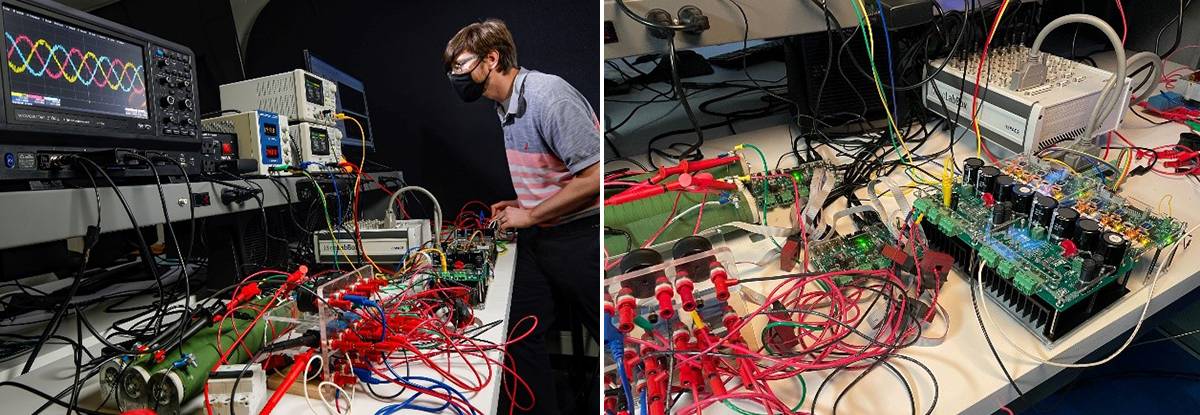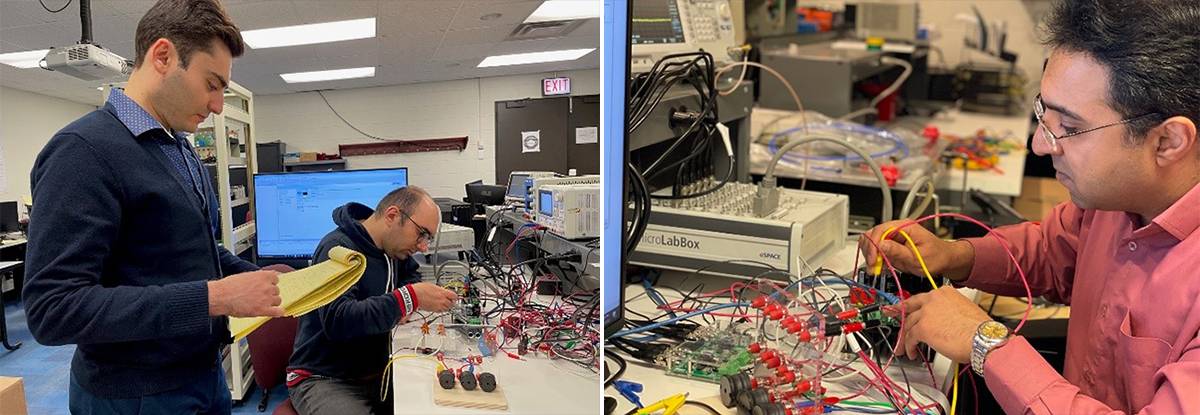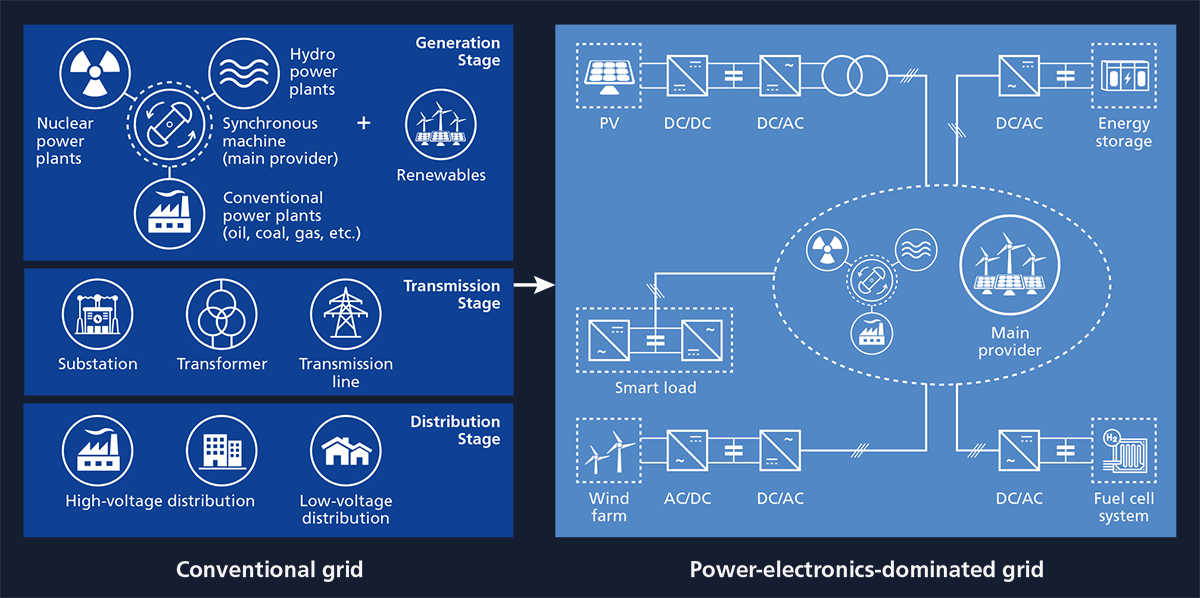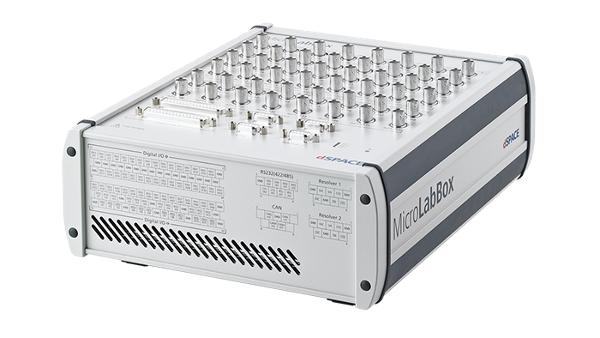A research team at the University of Illinois at Chicago (UIC) has embarked on a project to accelerate the implementation of a new energy paradigm that embraces renewable energy resources and energy storage systems.
Conventional power plants which can adjust their active power to load demands, are rapidly being replaced by renewable energy generation plants that depend solely on the availability of renewable energy resources. This poses a major challenge to the safe and reliable operation of power grids.
Research at the University of Illinois Chicago (UIC) is addressing these challenges with a new energy paradigm for power generation that is based on power electronics featuring decentralized but interconnected controls. This new concept is fundamentally different from conventional power grids, which rely on centralized power plants.
Dr. Mohammad Shadmand, who serves as both Assistant Professor of the Department of Electrical & Computer Engineering and Director of the Intelligent Power Electronics at Grid Edge (IPEG) Research Laboratory at UIC, says the incentive for a power-electronics-dominated grid (PEDG) far outweighs the benefits posed by traditional power systems.
“Traditional power systems face several challenges, such as environmental issues (they are a cause of global warming), energy loss, stability issues, low efficiency, and observability planning limitations,” Dr. Shadmand explains. “Additionally, they are centrally controlled at the utility level. Moving toward a PEDG based on other energy sources resolves most of these concerns. However, some new issues still arise. We are working on the different aspects of these challenges to provide an effective overall solution.”
Power-Electronics-Dominated Grid (PEDG)
The PEDG will be integrated with communication infrastructures and the Internet of Things (IoT) to build a system with bidirectional information and power flows. It introduces new features, including attack resiliency, self-healing, improved power quality, accommodation of generation and storage systems at the point of the load as well as the real-time optimization of the system. PEDG has everything it takes to support the evolution of electricity markets.
Overcoming Obstacles
Although the new PEDG concept enables an increased use of renewable resources across the grid, it also introduces some obstacles in terms of privacy, stability, control, cyber-physical security, and planning. These issues have to be addressed to accelerate the full implementation of the new paradigm.
“Once we have addressed these challenges, we will have a secure and resilient energy system that can benefit the entire nation in several aspects, such as social welfare, clean air, decreased health care costs, and improved high-power quality,” says UIC Ph.D. candidate and IPEG lab research assistant Mohsen Hosseinzadehtaher.
The UIC research team’s solution:
- Designing autonomous control schemes, such as self-learning control methods, which can enhance cyber-physical security, resilience, controllability, and observability of the PEDG.
- Grid clustering techniques for better control of the grid and to remove superfluous communication links.
- Developing a real microgrid test bed to evaluate the designed control schemes and design a reliable portable energy generation system.
Think big, start small
Multiple research activities are being carried out in parallel. Shadmand says these activities are focused on the device level (grid-interactive inverters) and the system level (interaction of smart inverters in a grid cluster and situational awareness and cyber-security analysis).
“Most of the research phases have been completed, and now we are developing a real small-scale microgrid,” says Dr. Shadmand. “We will use this microgrid to experimentally check the functionality of our designed and proposed techniques to reach our ultimate goal: Ensuring resilient and secure operation of a power-electronics-dominated grid.”
The team is identifying potential disturbances that could jeopardize system stability. By performing root cause analysis on these issues, the team is able to create intelligent techniques for controlling system parameters and enhancing grid resilience and stability.
MicroLabBox Part of Test Bed
The team uses a MicroLabBox prototyping unit to control individual power switches on the test bed they designed. The test bed controllers were developed using MATLAB®/Simulink®. Voltage/current measurements from the power components are used. These measurements serve as input to the MicroLabBox, which then acts as the processor driving the control scheme developed in Simulink and providing the logic-level signals to drive the converters. For example, the team used the MicroLabBox to develop smart grid-forming and grid-following inverters to achieve coherence in power-electronics-dominated grids.

The test bed for the smart grid-forming and grid-following inverters, tested by Ph.D. candidate and IPEG research assistant Matthew Baker.

The event-triggered self-learning inverter, tested by the IPEG research team (from left): Dr. Mohammad Shadmand, Amin Y. Fard and Mohsen Hosseinzadehtaher.
Predictive Control Method Implemented
Initially, the resilient model-based predictive control scheme, which is inspired by artificial intelligence methods for grid-interactive inverters, was tested with a MATLAB/Simulink interface. Then, it was experimentally verified by running the simulation in the dSPACE ControlDesk environment.
Dr. Shadmand says the greatest solution provided by the MicroLabBox is the quick turnaround between developing a controller in Simulink and testing.
“MicroLabBox prevents us from having to invest in microcontroller programming early in our development cycle,” he continues. “For instance, the model predictive control has a fast dynamic response but requires a high processing speed with minimal turnaround time. Moreover, the adaptive control that we develop has to be swift to tackle the issue of resonance in the LCL filter under weak and ultra-weak grid conditions.”
“Overall, the MicroLabBox offers a very fast processing speed, and we were able to experimentally verify the control for smart inverters without much additional effort,” adds Hosseinzadehtaher.
“Moreover, with the user-friendly user interface of ControlDesk, we were able to capture all the results and change the parameters dynamically to attain the controller's dynamic response,” Baker continues.
Cooperative Operation of Distributed Energy Sources
For the granular study of PEDG, the MicrolabBox is used as a HIL platform to implement secondary and tertiary controllers of PEDG and to study the cooperative operation of distributed energy resources (DERs) for voltage regulation, frequency regulation, synthetic inertia emulation, transient stability enhancement, etc., in combination with grid-following and grid-forming DERs.
Courtesy of University of Illinois at Chicago
dSPACE MAGAZINE, PUBLISHED APRIL 2022





